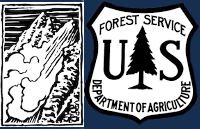Weak Snow at Lionhead
We rode up Denny Creek to the local's route. Coverage was thin, but passable as we left the Denny and worked up through the trees. The trail hadn't been set in yet this season. We didn't go far once we arrived in the openings below the ridge because visibility was poor. No avalanches or red flags for instability observed (but poor visibility).
The snowpack was weaker than everywhere else Alex and I have been this year. The snowpack remains thin (60-80 cm). The post-Thanksgiving dry spell resulted in a well-defined layer of surface hoar and near surface facets. Below that the base of the snowpack transitioned to large grain sugary facets and depth hoar. Resting on all this weak snow was a cohesive slab. In the non-wind-loaded terrain where we rode, the snowpack seemed to have adjusted to the current load (ECTNs in the high teens to 20s, PST 30/100 arrest). However, new or wind-drifted snow would upset this delicate balance. We avoided wind-loaded terrain where avalanches would be most likely, though this was partially because our planned route simply didn't intersect with commonly wind-loaded slopes.
While snowpack tests were not propagating failure today, just a few inches of snow (over 0.3" SWE) would change the picture. The danger would increase and collapsing and human-triggered avalanches would become likely.
On the drive we saw one small wind slab in Yellowstone that looked 1-3 days old (photo attached).
Visibility improved on the drive back, with high clouds, and we looked towards Lionhead with Binoculars from the highway and did not see any avalanches.
